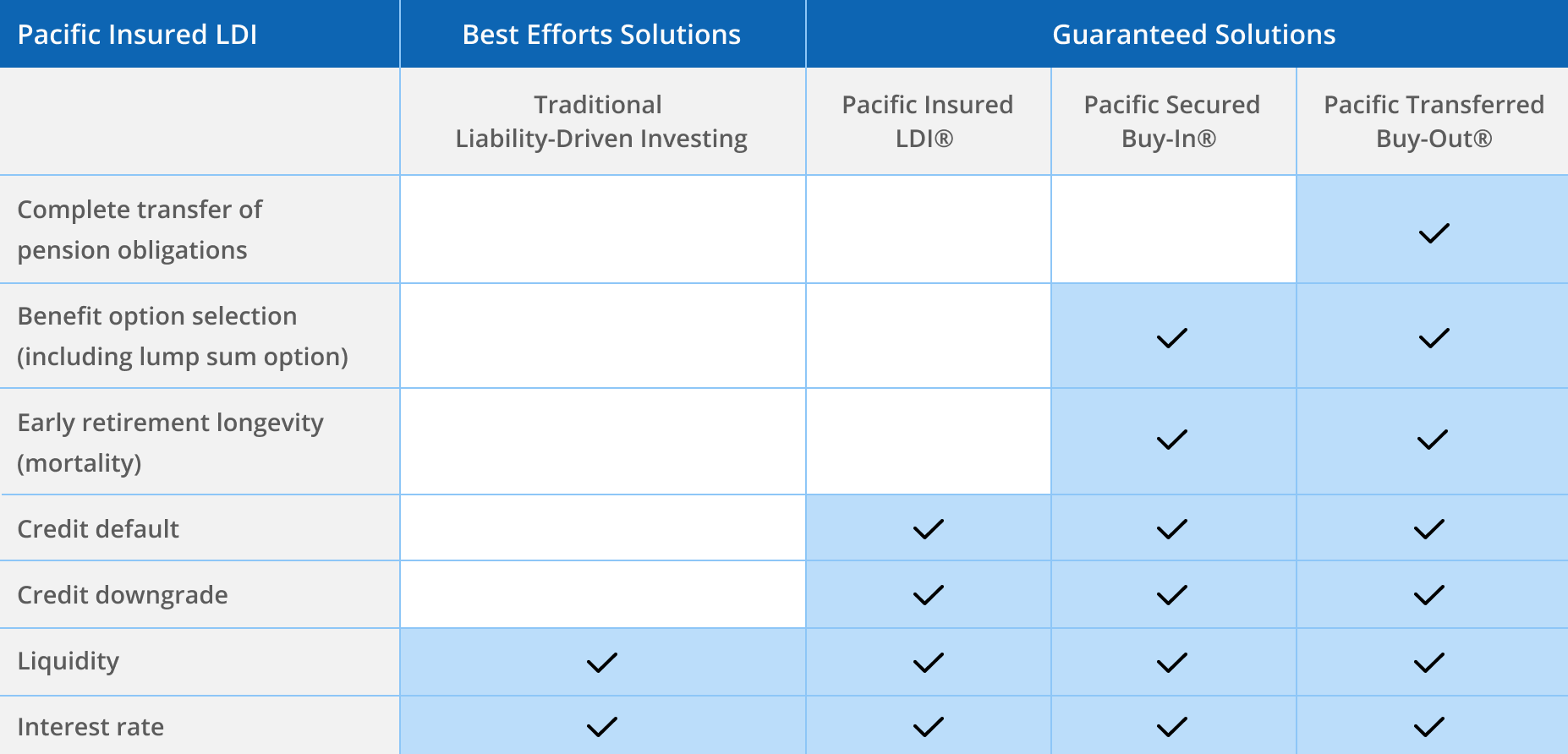Comparing Pension Buy-Outs and Pension Buy-Ins
Both options for defined benefit plan sponsors require careful consideration
Defined benefit (DB) plan sponsors interested in reducing plan risk and eventually removing the liability from their company's balance sheet now have more options than just a few years ago. The new possibilities are helpful but also complicate the process of selection. To explore today's solutions, and how to use them, Alison Cooke Mintzer, editor-in-chief of PLANSPONSOR, spoke with Russ Proctor and Marty Menin, both directors of institutional sales at Pacific Life. They explained the difference between the traditional buy-out solution and the newer buy-in solution.
PS: A buy-out of pension liability has been around a long time, whereas, in the U.S., the buy-in concept is relatively new. How are these two similar?
Proctor: A buy-out is a purchase of annuities for all or some of the participants in a defined benefit [DB] plan that transfers all the risk and liability off the plan sponsor's balance sheet to an insurance company. Buy-ins have been used for many years in the U.K. A buy-in, such as our Pacific Secured Buy-In solution, resembles a buy-out in that it transfers the investment risk, interest rate risk, liquidity and longevity risk to the insurance company. And, by the way, we just completed the third buy-in contract ever placed here in the U.S.
PS: Congratulations! So, what makes a buy-in different from a buy-out?
Menin: Under a buy-out contract, the liabilities are transferred to an insurance company and completely removed from the pension plan and the company's balance sheet. The insurance company issues certificates to individual plan participants and directly assumes all future payment obligations.
The key difference with a buy-in contract is that the plan sponsor retains the payment obligation to plan participants and the liability remains on the company's balance sheet. The insurance contract becomes an asset of the plan under which the issuing insurance company is obligated to cover the financial risks and makes covered benefit payments in bulk to the plan sponsor. Individual certificates are not issued to the plan participants and the participants remain in the plan for purposes of actuarial valuations, calculation of PBGC [Pension Benefit Guaranty Corp.] premiums, etcetera.
PS: Why would a plan sponsor choose a buy-in or buy-out?
Proctor: A buy-out is used when the plan sponsor is either terminating the plan, and has to buy annuities to complete the plan termination, or wants to completely settle a portion of the liability. A buy-in is more of a steppingstone to get to a buy-out; the plan sponsor may want to transfer most of the risk now but can't fully settle the liability yet.

